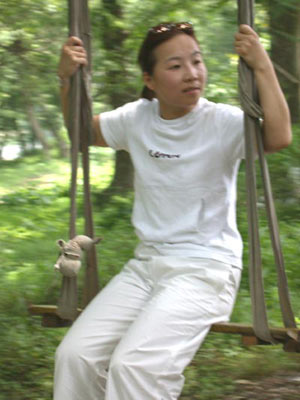| Chinese Way > Sports > Traditional |
|
|
Swinging
Swinging had become a popular performing art by the Song dynasty (960-1279), when professional acrobats performed daring feats called swinging over water from swings installed on the decks of two separate pleasure boats. Music played as one acrobat climbed up and down a tall pole affixed to the stern of one boat while another acrobat performed tricks on a swing before both finally somersaulted into the water.
Swinging became a formal competition of the National Sports Meeting of Minority Groups in February, 1986. Nowadays, it has been a common plaything for children. |
||||
All rights reserved. Reproduction of text for non-commercial purposes is permitted provided that both the source and author are acknowledged and a notifying email is sent to us. |
||||
 |
